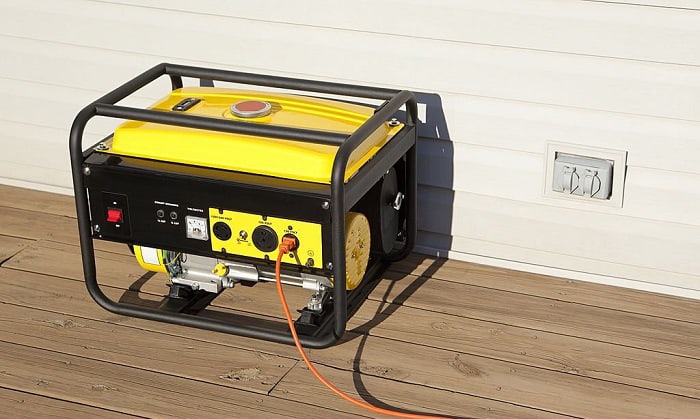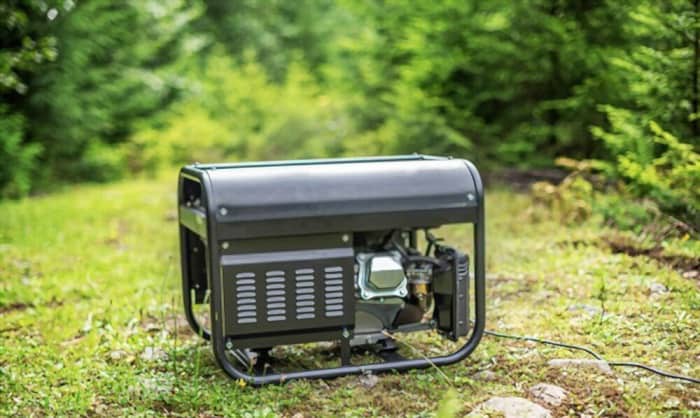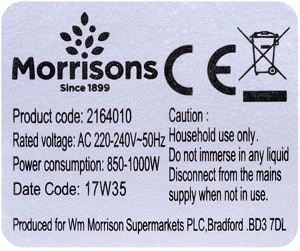“What size generator do I need for 200 amp service?” Given that most homes have 200A service entrances, there’s no wonder this question is prevalent.
As a rule, look past the service entrance’s size and focus instead on the size of the load you intend to run once the generator kicks in. If you want to run all appliances, you need to consider your property’s usual energy consumption.
If not, then you have to list down all the gadgets and appliances that will depend on the generator and account for their individual starting/surge and running wattage.
Read on to learn how.
Table of Contents
The Right Generator Size for a 200 Amp Service
Since we’ve established that the answer to the question varies, we’ll tackle this in two ways:
- The more straightforward route is for those who just want a general idea of what sizes they will likely have to work with.
- And, the more “advanced” one is for those who want a more efficient, optimal, and arguably safer setup.
Moreover, while I did say that you shouldn’t consider the 200 amp capacity of the service that much, we still have to acknowledge that 200 amps are the ceiling in this scenario.
- That means you can’t exceed 48,000 watts when sizing. For 100 amp service, it’s half that at 24,000 watts.
- A few electricians will also suggest you only use up to 80% of the service’s total capacity, and I see nothing wrong with that. For a 200 amp one, that means your real ceiling is 38,400 watts.
The Common Range and Size Values For 200 Amp Services
With that out of the way, let’s begin with the easier route. Are you the type of homeowner that just wants to get a home generator for the typical loads of 200A service panels?
- If yes, then know that the minimum size is 15 kW, while the maximum one is a 20kw generator. Anything between that range (16 kW to 19 kW) can be considered as medium sized generator.
Anyway, it’s not like you’ll be using a more powerful 3 phase generator, right?
Many electricians will get behind those numbers because they already account for a central AC unit’s load, which tends to pull the most power out of all household appliances.
However, the glaring issue that arises out of this approach is that you may end up oversizing or undersizing your generator.
Too small a generator will tend to trip the breaker and may damage the electrical equipment it’s supplying, while one that’s too big often costs more, is inefficient, and leads to a problem called wet stack (i.e. when excess gas doesn’t get fully and properly consumed in a diesel generator).
The said issue may also shorten the generator’s lifespan.
How Do You Size a Generator?
Putting an exact figure on size relative to total load always pays off. After all, rarely do our electric bills display the same costs and consumption values. Even though many homes have a 200 amp service, we don’t have the same total loads.
For my house chart, for example, an electrician friend of mine ultimately quoted a smaller 12 kW portable generator instead of the minimum 15 kW mentioned above for a 200 amp service.
With it, I was able to run all appliances and a 3-ton central air conditioning unit in my home that’s less than 1,500 square feet.
Of course, I wouldn’t have been able to use a smaller, more efficient generator if I hadn’t kept tabs on actual load requirements.
You can follow two methods when doing this, or feel free to do both if you have the tools. First, you need to figure out your total load, then calculate the total wattage and, in turn, the generator’s size from there.
1. First Method
Use a clamp meter to measure the total, actual current quickly. Clamp the device over the main feeder lines to the service panel. Turn on every appliance you mean to power with your generator before doing this.
After doing all those steps, calculate the full load in kW by using the following formula:
\begin{equation}
\text{kW} = \frac{\text{Total Amps} \times \text{Voltage}}{1{,}000}
\end{equation}
The value you get should then dictate the generator size for 200 amp service in your particular case.
2. Second Method
Refer to the nameplate of every appliance to get the individual wattages or get the information from the manufacturer. Afterward, you can start tallying the running wattage and surge wattage.
The running wattage is usually what the appliance, gadget, or fixture is rated for. This is the information normally seen on its plate or label. On the other hand, you can get a rough estimate of the surge wattage by multiplying the running wattage by 3.
Still, it doesn’t hurt to ask the manufacturer directly about what surge watts you’ll need to anticipate for every piece of equipment.
Why? Here’s the thing: appliances’ surge watts are never static. They could be 1x, 2x or 3x the running wattage.
Once you get the running wattage and surge wattage totals, be sure your generator’s size fits both.
Consider Doing Both Methods
I performed both methods to specifically find out how many kW generators I should use and everything, indeed, checked out. The setup I said above continues to work smoothly for me. Feel free to use the same formulas and steps for 150 amp service or anything bigger or smaller.
It also doesn’t matter if you’re using a natural gas generator or a standby generator because, again, we only have to consider the wattage, voltage, and amperage values when determining generator size.
Doing these power consumption calculations yourself is also better than using a generator size calculator because you’ll be able to double-check your actual wattage figures. It’s highly recommended if you decide to either go for a 200 amp generator rental or purchase one.
FAQs
How many amps is a 22kw generator good for?
This depends on the voltage. At 220V, it should be exactly 100A. At 240V, it’s around 92A. Follow the simple formula: Amps = Watts / Volts. In this case, we need to convert 22 kW to Watts, so we arrive at: 22,000W / 220V or 240V.
What happens if you undersize a generator?
If, for example, you end up using a smaller generator for 200 amp service, circuit breaker tripping issues will not be your sole problem.
Undersizing also results in too much voltage drop, to the point that generators can no longer supply the correct power to the appliances anymore, rendering them useless.
You’re also relegating too much power responsibility on your generator, so it will likely overheat, leading to a high risk of damaging not only itself but everything connected to it.
What size generator do I need to power my house?
This will always be dictated by the total load you’re planning to place on the generator. Pay attention to the formulas and processes laid out here, and you shouldn’t have any problems in getting the correct size for your needs.
Conclusion
All the facts I’ve shared here should give you the most precise answer to “What size generator do I need for 200 amp service?”
Again, do either the clamp meter or wattage calculation techniques or both to be sure that you’re acquiring the exact figures of electrical loads. Size the generator from there.

I am Edwin Jones, in charge of designing content for Galvinpower. I aspire to use my experiences in marketing to create reliable and necessary information to help our readers. It has been fun to work with Andrew and apply his incredible knowledge to our content.



